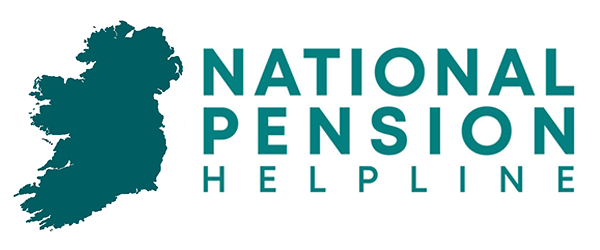If you’re interested to know how much income tax you’re paying without crunching the numbers yourself, you’ve come to the right place. Our free online tax calculator provides you all the information you need about your taxes and take home pay, all in less than a minute.
Designed to be as user-friendly as possible, the calculator works like this: simply input your salary, tick any boxes that apply to you, and hit ‘calculate’. You’ll instantly see your results displayed, with a clear breakdown of your earnings and tax burden.
And you can rest assured that all of the information on this page is up to date for the 2025 tax year.
What taxes do you pay in Ireland?
Most people in employment in Ireland are required to pay three taxes:
- PAYE (Pay as You Earn)
- PRSI (Pay Related Social Insurance)
- USC (Universal Social Charge)
How much you pay is determined by your income, type of employment, pension contributions, and other personal circumstances. Let’s look at each of these in more detail to find out how much you have to pay in taxes in Ireland.
Calculating income tax – PAYE (Pay As You Earn)
Nearly all earnings are subject to taxation, and PAYE (income tax) is deducted from your salary by your employer. You will see PAYE on your payslips and in our tool above – but you can also use our income tax calculator to find out how much you would pay if your earnings were higher or lower.
So how does PAYE work? Income from employment is taxed at two different rates in Ireland: 20% and 40%.
Employees pay 20% of their gross salary up to the standard rate cut-off point, which for a single person is currently €44,000. Any earnings over this threshold are taxed at the higher 40% rate.
The threshold for lone parents and married couples with one income is higher – at €48,000 and €53,000 respectively. The standard rate cut-off for married couples with two incomes is up to €88,000.
Standard rate cut-off points in 2025
| Single person | €44,000 |
| Lone parent | €48,000 |
| Married couple with one income | €53,000 |
| Married couple with 2 incomes | Up to €88,000 |
How much PAYE is deducted from my salary?
If you are single and earn less than €44,000 (gross) per year, your entire salary is taxed at the lower 20% rate. For example, if your annual salary is €50,000, you will pay 20% of the first €44,000, and 40% of the remaining €6,000.
Lone parents and married couples with one income have higher cut-off points, at €48,000 and €53,000, respectively. Over these thresholds, lone parents and married couples are taxed at 40% of additional earnings.
Married couples who have two incomes can be taxed up to 88,000 – with the standard rate cut-off point for the higher earning spouse being €53,000. The cut-off for the lower earner is €35,000.
PRSI – Pay Related Social Insurance
PRSI (Pay Related Social Insurance) is your compulsory social insurance contribution to the Irish State.
If you earn more than €38 per week, PRSI is deducted from your wages and transferred to a current account managed by the State, which is used to fund benefits such as the State pension and Jobseekers’ payments.
How much PRSI do I pay?
How much employees and employers pay in PRSI depends on their earnings and social insurance class.
The most common is Class A, covering those in industrial, commercial and service roles, as well as most public and civil servants. A full list of classes can be found on the government’s website here.
Class A employees who earn over €352* per week pay 4.1% of their salary This will rise to 4.2% on 1st October 2025. Those who earn under €352 do not pay PRSI.
Class A employers pay 8.9% PRSI on weekly earnings up to €527, and 11.15% over €527. This will also increase by 0.1% in October 2025.
Self-employed individuals are labelled Class S pay 4.025% in PRSI, and a minimum payment of €650.
*If you earn between €352.01 and €424, you’ll receive a PRSI credit. The maximum credit is €12 per week. Use our calculator to find out how much PRSI you pay if you earn between €18,304 and €22,048.
Universal Social Charge (USC)
Those in employment earning over €13,000 per year must also pay USC – Universal Social Charge. The USC you pay is determined by your income, with the percentage increasing in line with earnings.
The first €12,012 is taxed at 0.5%, rising to 8% on earnings over €70,044. The USC for self-employed income over €100,000 is 11%. The State Pension is exempt from USC payments.
| Rate | Income |
|---|---|
| 0.5% | Up to €12,012 |
| 2% | Between €12,012.01 and €27,382 |
| 3% | Between €27,382.01 and €70,044 |
| 8% | €70,044.01+ |
| 11% | Self-employed earnings of €100,000+ |
Tax Credits and Tax Relief
Tax credits and tax relief can significantly reduce the amount of tax you pay. There are a number of tax credits available, and while some are granted automatically, you must claim others yourself.
If you are resident in Ireland, Revenue will automatically grant a Personal Tax Credit of between €2,000 and €4,000, depending on your personal circumstances. For a single person, the maximum Personal Tax Credit in 2025 is €2,000.
Individuals whose earnings are subject to PAYE also receive an Employee Tax Credit. If your annual PAYE income is over €10,000, you will get the maximum credit of €2,000. If your PAYE income is below €10,000, then the tax credit is capped at 20% of your income.
Tax relief on pension contributions
You can further reduce your tax burden by making pension contributions, which qualify for tax relief. How much you can contribute towith tax relief depends on your age, and an earnings threshold of €115,000.
The older you are, the more income you can contribute with tax relief. For those under 30, you can contribute 15%, and those aged over 60 can contribute 40%. See our page on pension tax relief for a full breakdown.
Using a pension calculator is an excellent way to better understand how much tax you can save using a pension and to see how well the savings compound over time.
How to calculate salary after tax
To calculate your taxable income, you should deduct:
Once you have deducted these payments from your gross income, this is your taxable income, which will be subject to PAYE. Pension contributions are subject to USC.
Tax Exempt Income
While nearly all earnings are taxed, there are some exemptions that may apply to your income, such as wins from licensed lotteries.
Income that may be exempt from tax include:
Similar Calculators
Pension retirement calculator (how much you need to contribute to reach your retirement goals)
Pension lump sum calculator (how much you can withdraw from your pension tax free)
Defined benefit calculator (how much is your DB pension worth at today’s transfer rates)

